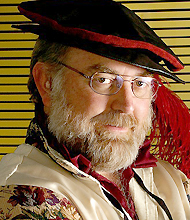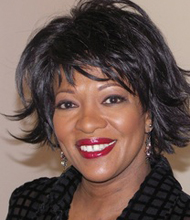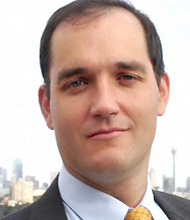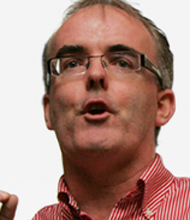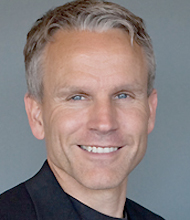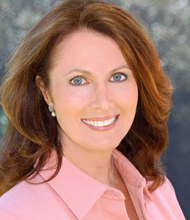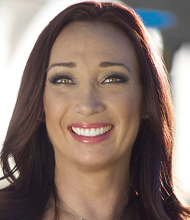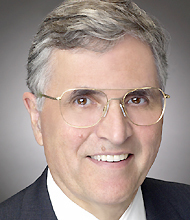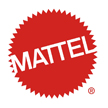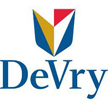| TRAVELS FROM |
|
SPEAKING FEE RANGE ** Please note that while this speaker’s specific speaking fee falls within the range posted above (for Continental U.S. based events), fees are subject to change. For current fee information or international event fees (which are generally 50-75% more than U.S based event fees), please contact us. $15,000 to $20,000 |
|
BOOK THOMAS FREY speakers@coreagency.com |
| TRAVELS FROM |
|
SPEAKING FEE RANGE* $15,000 to $20,000 |
|
Book Thomas Frey speakers@coreagency.com |
- The “Dean of Futurists,” Frey combines broadly contextual, reality-based thinking with innovative visualization of the future.
- Founder of the DaVinci Institute, a “working laboratory for tomorrow,” and author of Communicating with the Future.
- Clear-eyed predictor of future trends in education, the economy, work, innovation, transportation, cities, agriculture, money, and international governance.
A successful visionary of the future focuses not just on advances in technology, but also on the context in which new technologies and ideas will flourish – evolving modes of governance, system changes, evolving attitudes, alterations in human conditions, and all the other factors that impact how we live, work, and thrive. Thomas Frey has built a remarkable record of successfully combining broadly contextual, reality-based thinking with innovative visualization of the future to predict future trends. A veteran of seventeen business start-ups and adviser to hundreds more, Frey understands that future predictions must be grounded in an understanding of the driving forces behind key trends, nuances that can be leveraged, and the implications of change on people in all walks of life.
Frey spent fifteen years as an engineer and designer at IBM before launching the DaVinci Institute, a “working laboratory for tomorrow,” in an effort to share his visionary talents with a broader audience. While at IBM he received over 270 awards, more than any other company engineer. As a speaker, he enjoys customizing his presentations based on the needs of audiences ranging from NASA to Boeing, Hewlett-Packard, Capital One, Visa, Ford Motor Company, Qwest, and the International Council of Shopping Centers.
Author of Communicating with the Future (2011), Frey has been labeled the “Dean of Futurists” by both the Denver Post and the Seattle Post-Intelligencer. Frey’s work and predictions have been featured in national and international publications including the New York Times, the Wall Street Journal, National Geographic, Wired,and the Times of India. He writes a weekly “Future Trend Report” newsletter and a weekly column for FuturistSpeaker.com.
“Tom is very insightful and definitely an original thinker.”
– Colorado Governor Bill Owens
“Your presentation was absolutely wonderful.”
- Former Colorado Governor Richard Lamm
“Tom was great! We received high marks on his presentation! He was appealing and relevant to our audience and a dynamic speaker. It was truly a pleasure to meet him and a pleasure to work with you on getting him to our convention.”
– Rozana Audisho, Public Relations Manager – FSCC Credit Union Retail Delivery Convention
“Thank you for your excellent presentation in Jacksonville. It was a pleasure spending time with you, and your ′Future of Education′ speech was extremely well received. 84% of our attendees rated the presentation Good-Excellent. Powerful numbers indeed.”
– Larry Fairman, Director, Florida Workforce Summit
“You are an amazing keynote speaker. Your experience and knowledge contributed in a huge way to the success of our Sales Rally. You have given us vision and clarity to the confusing world of technology emerging around us, showing us where our business is going, and because of that, many participants now see the urgency to act for our company to maintain its position as a leader in the ICT market.”
- Martin Geoffroy, General Manager, Business Development, Bell Canada
“Tom is an exceedingly bright guy, a humorous speaker and a person who is quick to challenge conventional wisdom. He is a quick study who can develop an imaginative presentation around almost any conceivable topic.“
– George Sharpe, Founder of the Greenwood Group and former Vice President of Product Development for Hunter Douglas
“On behalf of the membership, I want to thank you for your presentation on future business trends. Our members rated your presentation “excellent.” They enjoyed hearing your thoughts on the future of business and where the creative minds of tomorrow will take us. Lively conversations. Thanks again for a most interesting presentation!”
- Kristine Garland, Vice President, The Composite Can and Tube Institute
“One of the most thoughtful and entertaining talks I’ve ever been to! Tom is a very deep thinker, both motivational and inspirational with his ability to build creative insights into the world ahead.”
- Steve Masias – Former EEOC Director, City of Colorado Springs
“Fascinating, idea-generating talk! Your delivery was very funny, but at the same time thought-provoking and inspiring.”
– Gary Taylor – VP Coldwell Banker
“Your talk was wonderful! Very engaging. We were all still talking about it on Wednesday (two days later).”
- Alison C. Ruger, Director, Standards Business Development, Information Handling Services
“You were the entire topic of discussion in each of my classes the rest of today.”
- Daniel Sage, Teacher at William Smith High School, Aurora, Colorado
Thomas Frey is a polymath with a purpose: profoundly intelligent and capable of applying his considerable analytical skills to myriad issues of concern in contemporary life, Frey offers audiences a window into nearly any aspect of humanity’s future. Willing to customize his presentations to an organization’s specific needs, he provides clear-eyed forecasts laced with gentle humor and a teacher’s instinct for exposition.
Frey’s DaVinci Institute has devoted considerable time and expertise to researching future trends in education and intellectual development. His presentations on the emerging education marketplace and the future of libraries and information distill key findings in this field. Business audiences may benefit from his commentary on the future of the economy, work, innovation, money, and agriculture, as well as his insight into the most prominent jobs of the future. Municipal organizations and urban planners may seek his expertise on the future of cities and of transportation. Any audience that engages regularly with the global arena will benefit from Frey’s enlightened commentary on the coming age of “micronations” in our increasingly borderless, post nation-state world.
In addition, Frey enjoys more interactive sessions that allow him to “raise the hood” and get into the nuts-and-bolts details of specific future trends. Far from an abstract visionary, Frey believes that prediction without context is of little worth; he wants clients to receive tangible, applicable information that will help them make creative and useful decisions for the betterment of society.
Over the past decade, Thomas Frey has built an enormous following around the world based on his ability to develop accurate visions of the future and describe the opportunities ahead.
His keynote talks on futurist topics have captivated people ranging from high level government officials to executives in Fortune 500 companies including NASA, IBM, AT&T, GE, Hewlett-Packard, Lucent Technologies, First Data, Boeing, Capital One, Bell Canada, Visa, Ford Motor Company, Qwest, Allied Signal, Hunter Douglas, Direct TV, International Council of Shopping Centers, National Association of Federal Credit Unions, Times of India, Leaders in Dubai, HSM ExpoManagement, and many more.es ahead. Having started seventeen businesses himself and assisting on the development of hundreds more, the understanding he brings to his audiences is a rare blend of reality-based thinking coupled with a clear-headed visualization of the world ahead.
Predicting the future has little value without understanding the driving forces behind the trends, subtle nuances that can be leveraged, and implications for both the people directly affected in the industry as well as others farther down the technological food change.
But his work is not just restricted to advances in technology. Rather, he takes a much larger view of the playing field including shifts in governance, system changes, evolving attitudes and human conditions, and much more.
Each year his talks touch the lives of tens of thousands of people. Here are some of his most popular topics, but don’t feel restricted by this list. Every year he designs dozens of custom presentation based specifically around the needs of a particular audience.
MOST POPULAR PROGRAMS:
When Ivory Towers Fall: The Emerging Education Marketplace
Throughout history, education has been formed around the concept of “place.” Build fancy buildings, attract world-renowned scholars, and you have a college or university. This model works well in a culture based on teaching. Over the coming years, with our hyper-connected world, we will be shifting to a leaning model. And while “place” will still matter, it will matter differently.
Teaching requires experts. Learning only requires coaches.
The two primary variables of time and money will drive the new education marketplace, and the four primary trend lines involve:
- Shortening the distance between students and experts
- People matter. Rewriting the social context of learning
- The emerging courseware industry
- Experimental emersion camps
Those who attend will begin to understand the shifting ground on which higher education stands and how the embryonic learning businesses of today are set to mushroom into the next-ed industries of tomorrow. Many of our existing colleges and universities will collapse, leaving great opportunities for those who specialize in rebirthing this great institution.
The Future of Business – Major Trends and Driving Forces in the Post Recession Economy
What will be the major driving forces over the next ten years? Will it be changes in technology, business practices, government or public policies? Or will it be a solution for a major problems such as a cure for cancer, environmental issues, global conflicts, or poverty?
This talk is be custom tailored to match the needs and interests of your specific audience. The overall goal is to take a probing look at the major forces behind today’s chaotic business environment and focus on where the opportunities lie. It is the perfect opening keynote for an event, setting a positive tone with a message of hope and inspiration for tomorrow’s business leaders.
Future Libraries and the Four Crossroads of Change
Traditionally, libraries have been the place where people go to find answers to difficult questions, but today libraries find themselves being the question. The relationship between a user community and its library is changing. Library “customers” are beginning to view the “relevancy” of their institution through a different lens, and their perception of what a library is and how it can add value to its community is evolving.
With new information exploding from virtually every corner of society, libraries today find themselves at the intersection of four fundamental crossroads of change – literacy, books, education, and work. Literacy involves much more than just reading and writing, it involves the constant flow of words in and out of our heads, and this flow of words is morphing, fragmenting, and changing.
Books are becoming increasingly digital in nature. As books continue to evolve, the notion of what a book is and how it will be used to convey its content, will be an evolutionary metamorphosis unlike anything we have ever seen. Our education systems of today will soon be transitioning to hyper-individualized self-paced learning systems formed around the flow of organically generated courses synced specifically to the learning styles of each student.
Technology is rapidly eroding the idea that work has to occur in a certain place. Instead there is a diminishing value to proximity, and at the same time, a diminishing value to place. Work in the future will increasingly be formed around the momentary needs of the business. Workforce talent will be skills-based and matched automatically to suitable projects and micro-jobs.
At the heart of all these changes is the constantly evolving library, a library adept at reinventing its services to meet the changing needs of their constituencies. In the future, libraries will be defined far more by the journey they’ve taken rather than the brick and mortar they exist in today.
As a futurist, Thomas Frey sees inspiring opportunities being created inside the chaotic evolutions of change. The golden years of libraries are still ahead, and your library can be part of it.
The Evolution of Work
The average person that turns 30 years old in the U.S. today has worked 11 different jobs. In just 10 years, the average person who turns 30 will have worked 200-300 different projects.
Business is becoming very fluid in how it operates, and the driving force behind this liquefaction is a digital network that connects buyers with sellers faster and more efficiently than ever in the past.
But the effect of our flowing digital business world does not stop with how transactions are performed. Instead, it has begun to morph and change virtually every aspect of how business is conducted including the duration and permanency of work assignments, the employer-employee relationship, and the organizing principals around which work assignments and talent coalesce.
At the heart of the coming work revolution will be a new kind of business structure serving as an organizational magnet for work projects and the free-agent talent needed to complete the work.
The Future of Innovation
If Steve Jobs had never lived, would we still have the iPhone and iPad today? Similarly, if Walt Disney, George Lucas, and Pete Diamandis had all taken jobs on Wall Street instead of living their lives as true innovators, would we still have Disneyland, Star Wars, and the X-Prize Foundation today?
To put it more succinctly, if the visionary never existed, would we still have the industry?
Certainly, if Edison hadn’t invented the light bulb, someone else would have. In many cases, inventors have lost out on a patent because of mere minutes separating the timestamp on a patent. So the invention was destined to happen regardless of whose name showed up on the patent, right?
Not so fast. The systems we create help define the kind of people who will naturally rise to the top. And these leaders of innovation have decidedly different approaches for making things work. So what would a new system for innovation look like?
This talk helps listeners climb aboard a fascinating journey into the forces of change and how they will affect tomorrow’s world of innovation.
The City of the Future
Great communities are founded on great ideas. At the same time, our most admired communities become a magnet, attracting the brightest minds. The relational effect is clear: Bright minds make a community great, and great communities attract bright minds. With this in mind, the city of the future will be designed around eight dimensions of human connectedness, connecting great people with great ideas.
A connected community is a vibrant community, Ideas are exchanged, energies are exchanged, and people become extremely loyal to the networks that connect them to the rest of the world. While it is now easy to communicate with people all over the world, we can only physically interact with people and places locally. Human connectedness involves much more than just communication. And its not just about business life, family life, or what we do for entertainment. It is all of that and much more.
The Future of Transportation
Driverless cars are coming soon. Very soon. Consider the following:
- Mercedes is equipping its 2013 model S-Class cars with a system that can drive autonomously through city traffic at speeds up to 25 m.p.h.
- Google’s self-driving car fleet has already racked up over 200,000 driverless miles on highways. Google reports these cars have required intervention by a human co-pilot only about once every 1,000 miles and the goal is to reduce this rate to once in 1,000,000 miles.
- In 2010 VisLab ran VIAC (VisLab Intercontinental Autonomous Challenge), a 13,000 km test run of autonomous vehicles. In this competition, 4 driverless electric vans successfully drove from Italy to China, arriving at the Shanghai Expo on October 28, 2010. This was the first intercontinental trip ever completed by an autonomous vehicle.
- Many car companies including General Motors, Volkswagen, Audi, BMW, and Volvo have begun early testing of driverless car systems.
- General Motors has stated that they will have a driverless model ready for final testing by 2015, going on sale officially in 2018.
Driverless vehicles will eliminate more jobs than any technology that we have seen so far. They will eliminate the drivers in all taxis, trucks, limos, shuttles, and buses to name just a few. Over time, they will eliminate gas stations, car washes, traffic cops, traffic courts, stoplights, and even parking lots. Personal car ownership will plummet, along with maintenance, insurance, tire shops, and more. They will also prove to be intense competition for the airlines as a 6-8 hour relaxing drive can eliminate nearly as much high-stress time in and between airports. And this is just touching the tip of the iceberg.
At the same time, driverless vehicles will be creating many new jobs. What are they, and will they replace more than a fraction of the total jobs lost? Are we about to drive off a huge economic cliff?
55 Jobs of the Future
As the musical chairs game of unemployment money runs out, and an increasingly large number of people are left without a seat at the jobs table, desperation begins to set in. They need to re-boot their life, but they don’t know how. Higher education today tends to prepare students for jobs of the past. The way a Midwesterner would phrase it, “they are constantly shooting behind the duck.”
The demand for new skills is changing quickly. Technology research firm IDC predicts the amount of data businesses will have access to will grow 50-fold over the next decade. As data becomes cheaper, faster, and more pervasive, the nature of our work will change as well.
The first wave of baby boomers has now turned 65. As this generation grays, their needs will change. Their growing numbers and increasing medical needs will require a different kind of health care professionals to take care of them.
As a rule of thumb, 60% of the jobs 10 years from now haven’t been invented yet. This talk is a mind expanding journey into the workforce of the future, looking at the emerging technologies that will create the industries who employ the workforce of tomorrow.
The Future of Agriculture
Can better food create better people? Will a better food supply lead to healthier, stronger, better thinking people? This is exactly the premise that is driving many of the advances in farming today.To understand agribusiness in the future, consider a model that conveniently exists right now – in the human-food interface. Metabolism is a term used to describe the various chemical reactions that take place in every cell of the body. Intermediary metabolism is a vast web of interconnected reactions by the constituent parts of the cell. Every metabolism is different. Gaining an ability to read and monitor a person’s metabolic reaction to the food eaten will cause the agriculture industry to evolve with great precision around the tiny niche demands of consumers.
The Future of Money
Altering Our Dependencies and its Affect on the Flow of Money – Every transaction involves two sides – the payer and the payee. Throughout history businesses have lived or died on the timing and flow of money and deal brokers place a huge emphasis on controlling both sides of a transaction. All non-cash money transactions in the past involved a time float to allow time for the money to clear their respective accounts, and even cash transactions involved delays in getting posted to a bank account. Future transactions will be real-time and this seemingly minor change will revolutionize the shape and tempo of business.
The Future of Money – Altering Our Dependencies and its Affect on the Flow of Money
Every transaction involves two sides – the payer and the payee. Throughout history businesses have lived or died on the timing and flow of money and deal brokers place a huge emphasis on controlling both sides of a transaction. All non-cash money transactions in the past involved a time float to allow time for the money to clear their respective accounts, and even cash transactions involved delays in getting posted to a bank account. Future transactions will be real-time and this seemingly minor change will revolutionize the shape and tempo of business.
OTHER POSSIBLE TOPICS:
Thomas Frey Unplugged – Future Trend Briefings
Tom’s understanding of the world around us clearly shines through when he goes off-script and gets interactive with small groups and executive teams. Both his depth of knowledge on specific industries, coupled with a broader perspective on system, technology, and lifestyle trends makes each session a riveting experience. Gone are the vagaries and generalized outlooks that accompany most predictions. Instead, he has a way of opening the hood to reveal the inner workings of the real drivers powering the engines of change.
Nation State 2.0 – The Coming Age of Micronations
The ideas we have about what countries are and how they should function are on the verge of changing. Our newly created world with borderless economies is confusing issues of power and control, and even the sovereignty of nations. The Nation State, created in 1648 with the Treaty of Westphalia, is about to transition into something new with emerging global systems creating autonomous multi-trillion dollar economies, assuming much of the authority currently in the hands of our country leaders. This talk steps listeners through several possible scenarios.
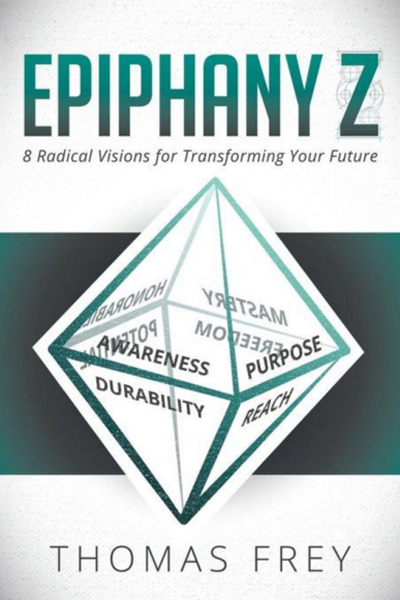
 Communicating with the Future: How Re-engineering Intentions Will Alter the Master Code of Our Future
Communicating with the Future: How Re-engineering Intentions Will Alter the Master Code of Our Future
Our journey into the future is never ending. It begins at the moment of our birth and continues forever. Until now, we have viewed ourselves as "victims" of the future, having to accept whatever life dishes out for us. However, it doesn′t have to be that way. This book is based on breakthrough tools and techniques that you can use to gain some measure of control over the future. Unlike books of mysticism that require a leap of faith, Communicating with the Future is based on a well-established cutting edge business practices. And yes, this is a proven methodology for controlling the future... well, parts of it.
Order Here

 VIDEO
VIDEO TESTIMONIALS
TESTIMONIALS PROGRAMS
PROGRAMS BOOKS
BOOKS